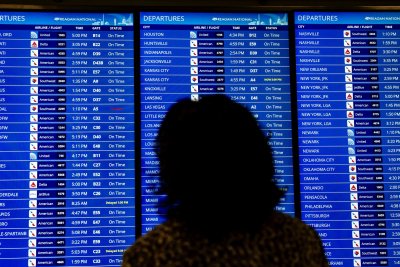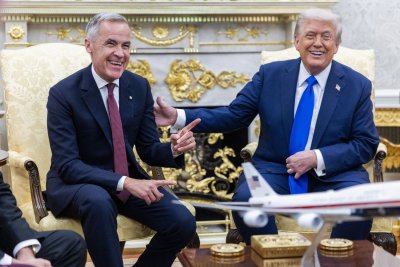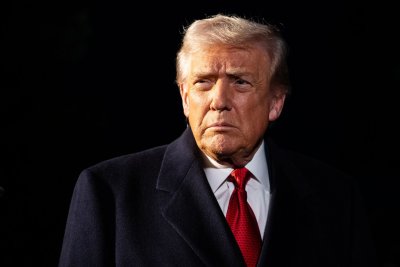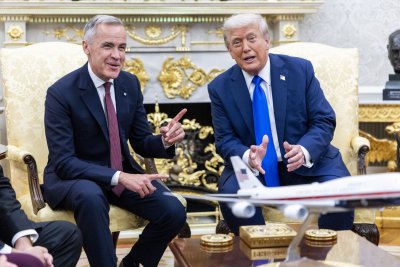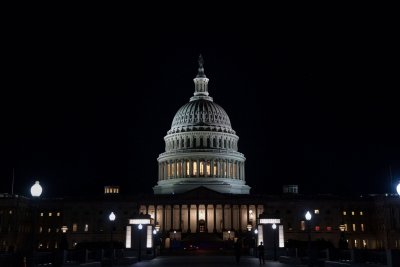1,000 flights cut on first day of federally mandated reductions
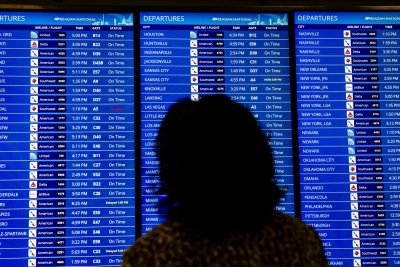
Nov. 7 (UPI) — A 4% reduction in flights took effect Friday after Transportation Secretary Sean Duffy ordered the reduction to ease stress on air traffic controllers during the federal government shutdown.
About 1,000 flights across 40 airports were canceled Friday. There also are delays amid controller shortages with flight reductions at the mandated airports by the Federal Aviation Administration. A 10% reduction is planned for next Friday.
Through Friday night nationwide, there have been 1,494 cancellations and 5,543 flight delays, according to FlightAware. The most cancellations were at Ronald Reagan Washington National Airport: 83 departures at 18% and 75 arrivals at 16%. This includes ones not linked to tower staffing issues, such as equipment problems or weather.
Flights were delayed an average of four hours tonight heading to Reagan, according to the FAA. There were 148 arriving delays, or 32% of flights, and 204 departure delays, or 45%.
United Airlines and American Airlines announced they have cut their flights by 4% for Saturday. This means 220 for American, which has the most flights, and 168 for United the third-biggest airline.
Delta Airlines, with the second-most flights, didn’t announce plans but canceled 170 on Friday.
And Southwest Airlines said about 100 flights will be canceled Saturday.
Control towers at several airports Friday are facing staffing shortages, including in San Francisco, Atlanta and others, CNN reported.
On Friday, there were staffing shortages at nine towers; 12 at TRACONs, which handle flights arriving or departing airports; and eight at the Air Route Traffic Control Center that handle flights at high altitudes.
USA Today reported that Duffy told Democrats who criticized his decision to cut flights, “Open the damn government.”
The federal government has been closed since Oct. 1, and the shutdown is now the longest in history at 38 days.
The staffing shortage is getting worse because air traffic controllers are quitting, said Nick Daniels, president of the National Air Traffic Controllers Association, to CNN.
“Controllers are resigning every day now because of the prolonged nature of the shutdown,” Daniels said. “We’re also 400 controllers short – shorter than we were in the 2019 shutdown.”
Daniels told CNN that controllers have to be “perfect” at work, and financial concerns can cause issues with their concentration.
“We are always being used as a political pawn during a government shutdown,” Daniels said. “We are the rope in a tug-of-war game.”
In one city, pilots have stepped in to help. At North Las Vegas Airport, a group of pilots delivered food and supplies for controllers and their families.
“I’ve been in the situation where I’ve had an in-flight emergency, and the air traffic controllers make a difference,” pilot Jeffrey Lustick told CNN affiliate KTNV. “They help you get to the ground safely. They alert people that you need help … air traffic controllers save lives.”
The pilots have made two deliveries to the controllers.
“The relationship between air traffic controllers and pilots is one of trust … they have to be able to survive, and we want them to stay here and continue to provide support to our community,” he said.
Airlines will decide which flights to cancel based on revenue, Michael Taylor, senior travel advisor at JD Power, told USA Today.
“All these airlines have shareholders, and their job as managers is to maximize revenue and margin and profit to the airline sales and keep your airline stock up,” Taylor said. “So they’re going to start first at looking – if you want 10% reduction in number of aircraft, well then we will cut those markets out that we’re not going to make the most money.”
There are other considerations, such as crew and aircraft placement, Taylor said. But the money is the bottom line.
“It won’t seem to travelers that there’s any rhyme or reason to it at all. It’ll seem random, but what’s really driving it is someone in corporate headquarters saying, ‘OK, you want the number of aircraft lowered? Fine. I’ve got to keep my revenue high. I’m going to take out the ones I don’t make any money on. It’s as simple as that,'” Taylor added.
Some travelers are making multiple backup plans, including different days and routes.
“What I’m worried about is getting to Houston in time for a procedure that’s been scheduled for quite some time and there’s some urgency,” Neil Lyon told CNN about flying from Santa Fe, N.M. I’m dealing with this, and I’m just thinking about the tens of thousands, or millions, who are dealing with other really serious circumstances that are impacted by what the situation is.”
